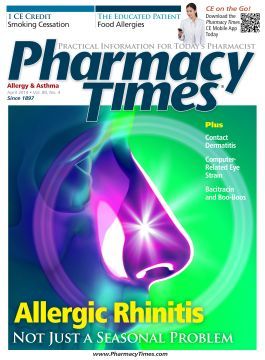Publication
Article
Pharmacy Times
Food Allergies Substantially Increasing Among Black Children
According to the results of a recent study, self-reports of food allergies among children have dramatically increased in the United States over the past few decades, with the greatest increases observed among non-Hispanic blacks.
According to the results of a recent study, self-reports of food allergies among children have dramatically increased in the United States over the past few decades, with the greatest increases observed among non-Hispanic blacks.
The study, published in the March 2014 issue of the Annals of Allergy, Asthma & Immunology, analyzed trends in food allergy prevalence among children by summarizing data from multiple reports across multiple decades. The researchers of the study identified a total of 10,090 publications representing 452,237 children from 1988 to 2011.
Overall, food allergy prevalence increased over time at a rate of 1.2 percentage points per decade. The most dramatic increases were observed among non-Hispanic black children; food allergies increased by 2.1% per decade among blacks, compared with 1.2% among Hispanic and 1% among non-Hispanic white children.
Because allergies were self-reported, the results may not accurately represent food allergy prevalence in the country, the study authors note.
“Other conditions such as food intolerance can often be mistaken for an allergy, because not all symptoms associated with foods are caused by food allergy,” Dr. Corinne Keet, an assistant professor of pediatrics at Johns Hopkins, said in a press release.
More research is needed to determine the reason for the increase in food allergy prevalence and for the differences observed among black, Hispanic, and white children.







